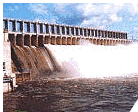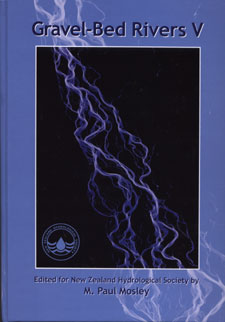

 |
 |
||||||
|

|
Title:
Gravel-Bed Rivers V, see also (GBR4)
Gravel-Bed Rivers in the Environment Papers and discussions on almost
every conceivable aspect of the behavior of these fascinating rivers and
their management. Of special interest, also see: Applying Geomorphology to Environmental Management |
Gravel-bed rivers are both fascinating and of great
practical significance to water resources managers.
This book reports the proceedings of the fifth Gravel-Bed Rivers Workshop, held
in New Zealand in August-September 2000. The Workshop brought together over
100 international scientists and river managers, to present their current research
and to debate many aspects of gravel-bed river behaviour and management. The
chapters are contributed by over forty specialists, with additional analysis
provided by many more. Their topics covered almost every conceivable aspect
of the science, ranging from the processes of sediment entrainment by turbulence
through to the response of fish to variations in river flows.
State-of-the-art technology and up-to-the-minute knowledge
is presented. The technological applications range from detailed measurements
of eddy structures and turbulence at centimetre-scale, through to time-lapse
video photography of the changing pattern of channels in a kilometre-wide braided
river. Exciting developments in data capture, image analysis and computer modeling
are enabling huge strides to be made in describing, understanding and predicting
the form and behaviour of gravel-bed rivers. They have revealed, for example,
the existence of dendritic networks of braid channels in large braided rivers,
which places the processes of channel evolution in a quite different perspective.
This Workshop made a particular effort to address management
goals in gravel-bed rivers, such as maintaining healthy aquatic ecosystems
or controlling aggradation. Ecological and fisheries scientists introduced recent
research into the behaviour of aquatic ecosystems in gravel-bed rivers. They
showed for example the crucial importance of disturbance by floods in determining
the diversity and biomass of aquatic vegetation, invertebrates and fish, in
association with entrainment and movement of bed material. A number of papers
considered the philosophy and practice of river management in three continents.
A field exercise in the Waiho River provided an opportunity for Workshop participants
to consider how to manage channel instability and aggradation in one of New
Zealand’s major tourist venues.
The book provides an important source of information and ideas for scientists, engineers, and resource managers seeking to understand gravel-bed rivers better. It will be useful also for senior undergraduate and graduate students who are developing their own research directions, and seeking inspiration from the leaders in their field. Publ. 2001.
© Copyright 2021. Water Resource Publications, LLC. All
rights reserved.
Colorado, USATelephone: 720-873-0171 / Fax: 720-873-0173
E-mail:
